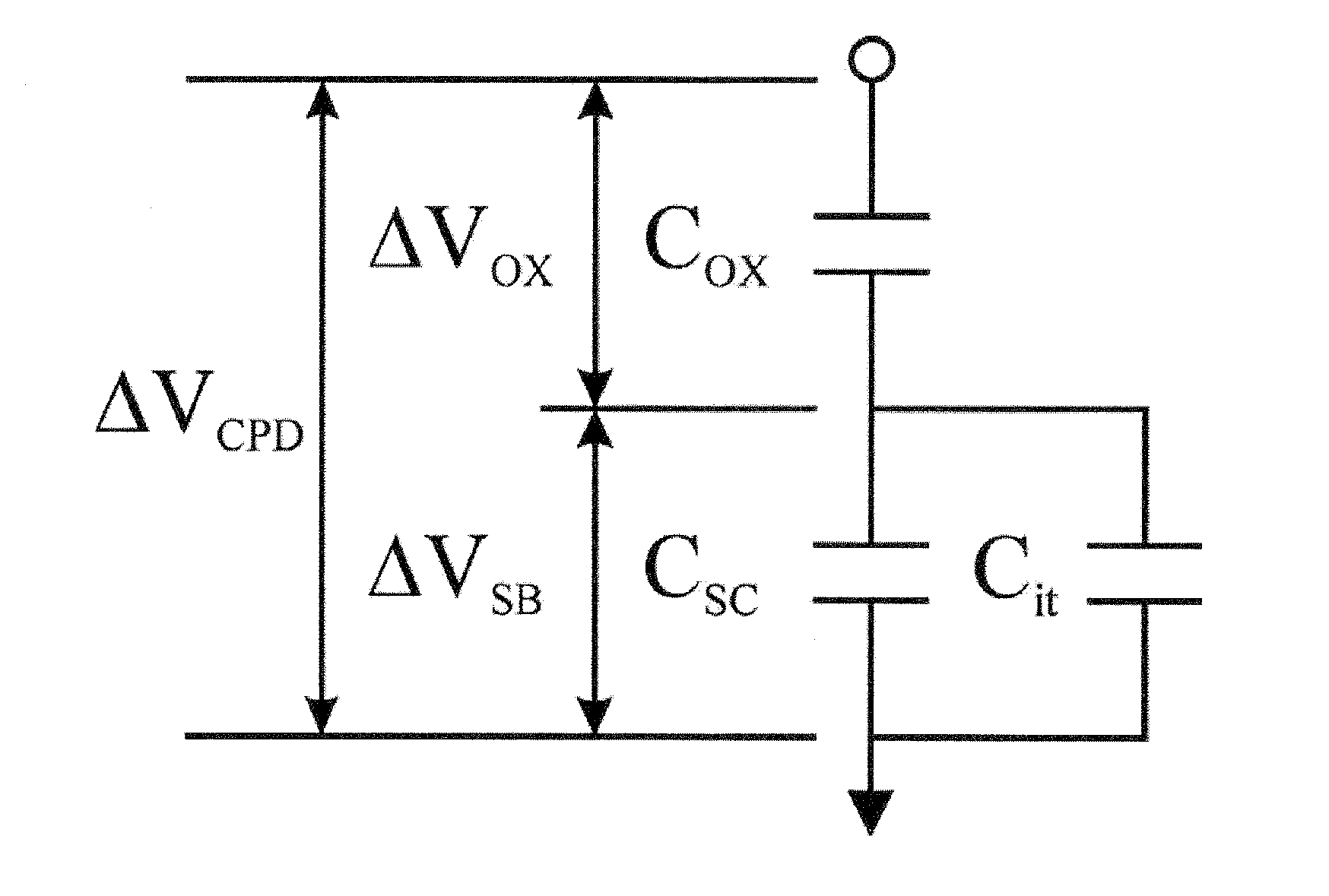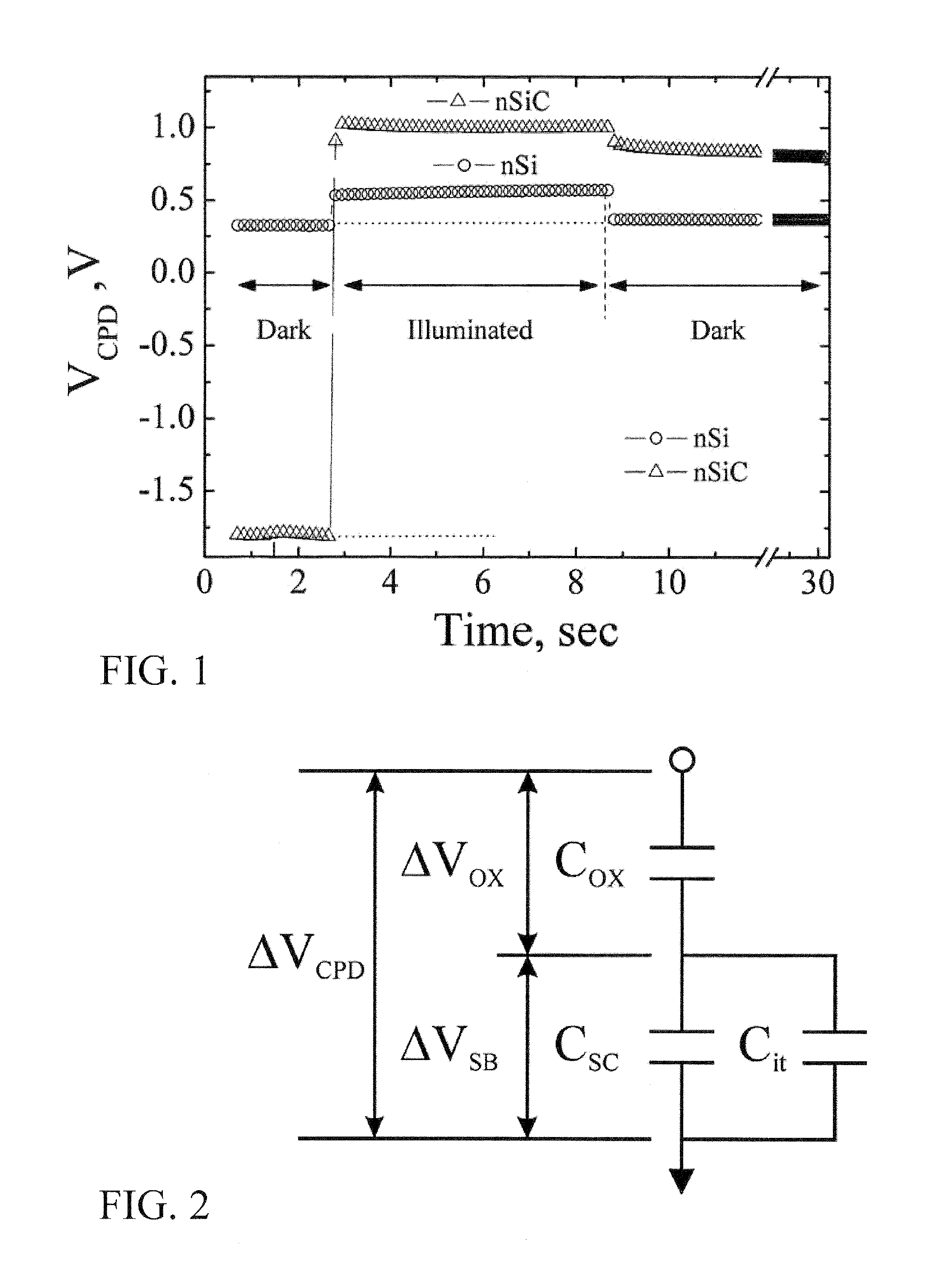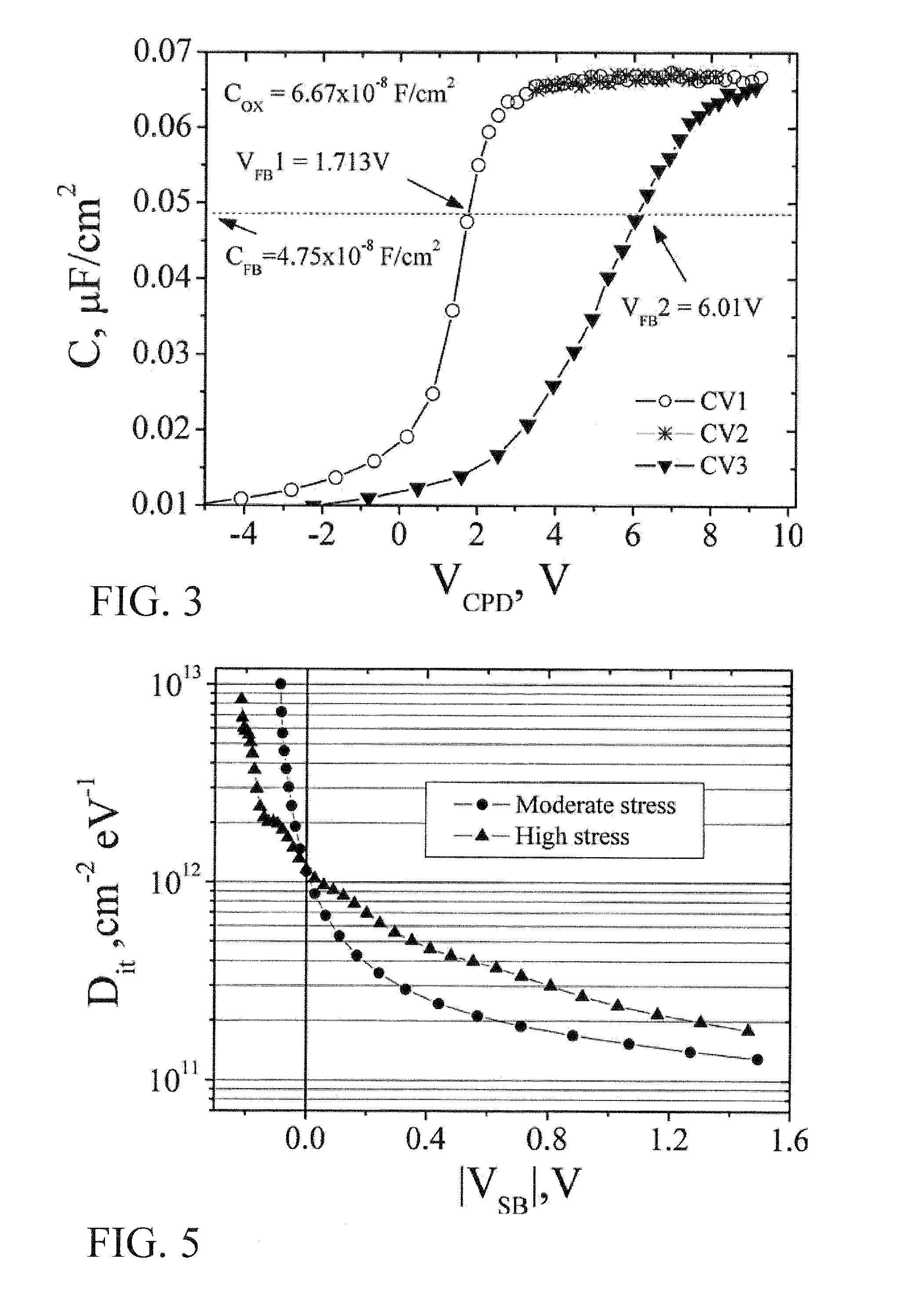Noncontact determination of interface trap density for semiconductor-dielectric interface structures
a technology of interface trap density and semiconductordielectric interface, which is applied in the direction of individual semiconductor device testing, semiconductor/solid-state device testing/measurement, instruments, etc., can solve the problem of difficult and/or inviable determination of surface barrier potential as a function of surface charge applied to obtain the dependence of interface trap on surface charg
- Summary
- Abstract
- Description
- Claims
- Application Information
AI Technical Summary
Benefits of technology
Problems solved by technology
Method used
Image
Examples
specific embodiments
[0034]A specific embodiment 1 relates to a method of determining an interface trap density at an interface between a semiconductor and a dielectric or oxide layer disposed on a surface of the semiconductor, comprising:
[0035]placing an initial electric charge on at least a portion of a surface of a dielectric layer disposed on a semiconductor, wherein placing the initial electric charge on the surface of the dielectric layer creates an accumulation state in the semiconductor, wherein placing the initial charge on the surface of the dielectric layer results in an electric charge, QC, on the surface of the dielectric layer,
[0036]placing at least two increments of additional electric charge on the portion of the surface of the dielectric layer, wherein each of the at least two increments of additional electric charge have the opposite sign as the initial electric charge, wherein after placement of the at least two increments of additional electric charge on the at least a portion of the...
PUM
 Login to View More
Login to View More Abstract
Description
Claims
Application Information
 Login to View More
Login to View More - R&D
- Intellectual Property
- Life Sciences
- Materials
- Tech Scout
- Unparalleled Data Quality
- Higher Quality Content
- 60% Fewer Hallucinations
Browse by: Latest US Patents, China's latest patents, Technical Efficacy Thesaurus, Application Domain, Technology Topic, Popular Technical Reports.
© 2025 PatSnap. All rights reserved.Legal|Privacy policy|Modern Slavery Act Transparency Statement|Sitemap|About US| Contact US: help@patsnap.com



